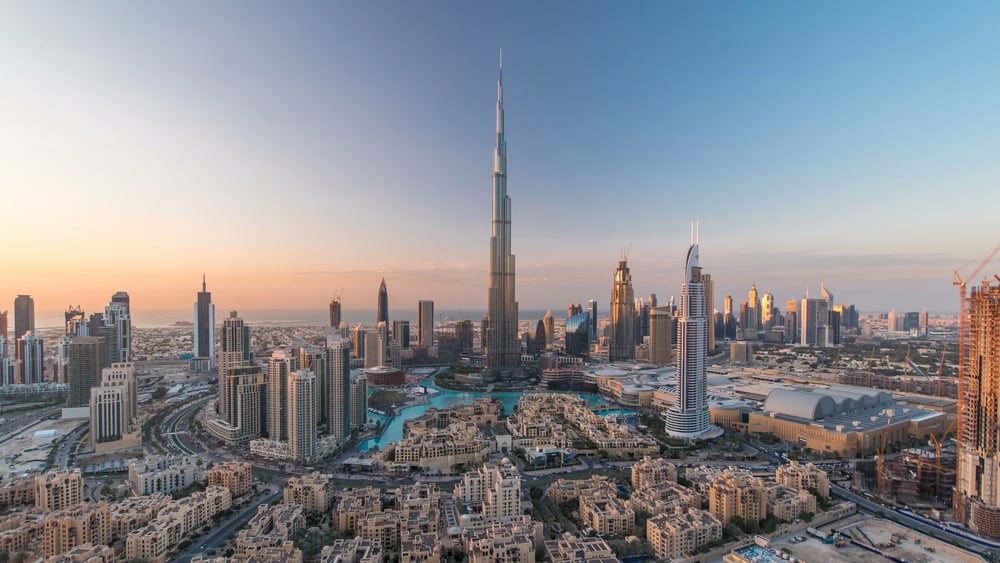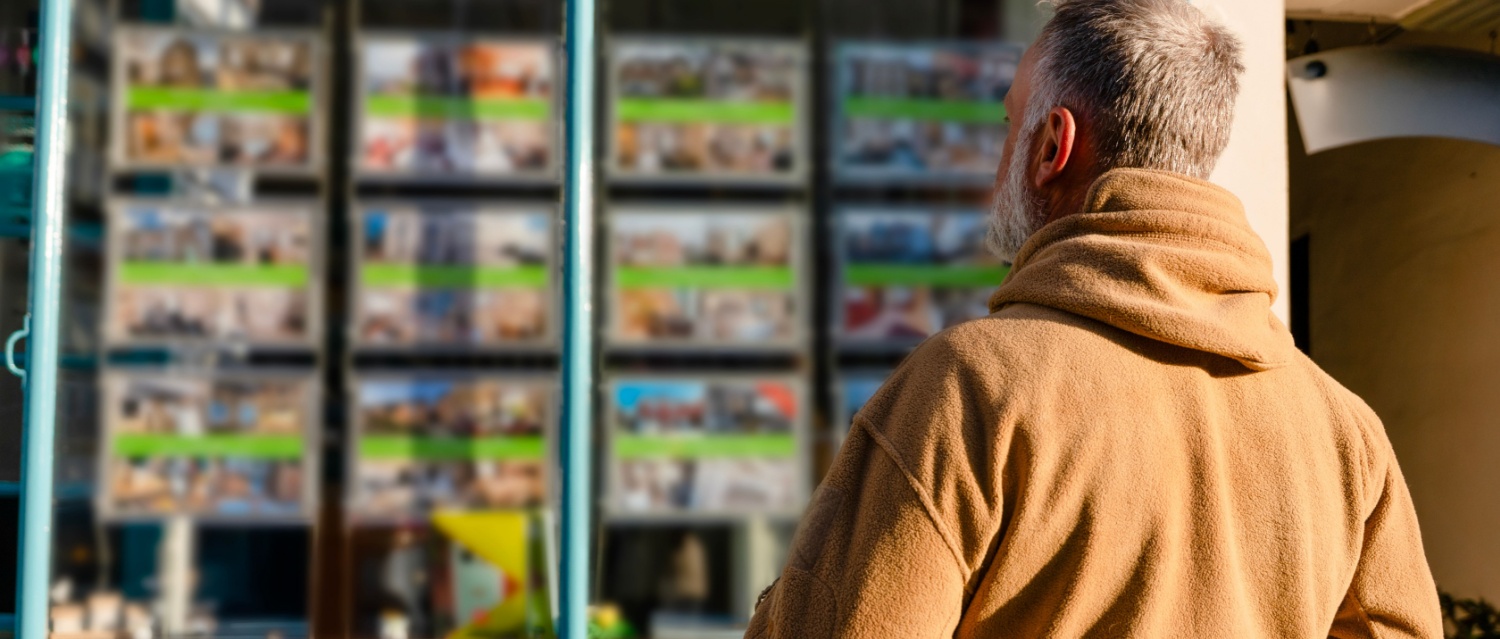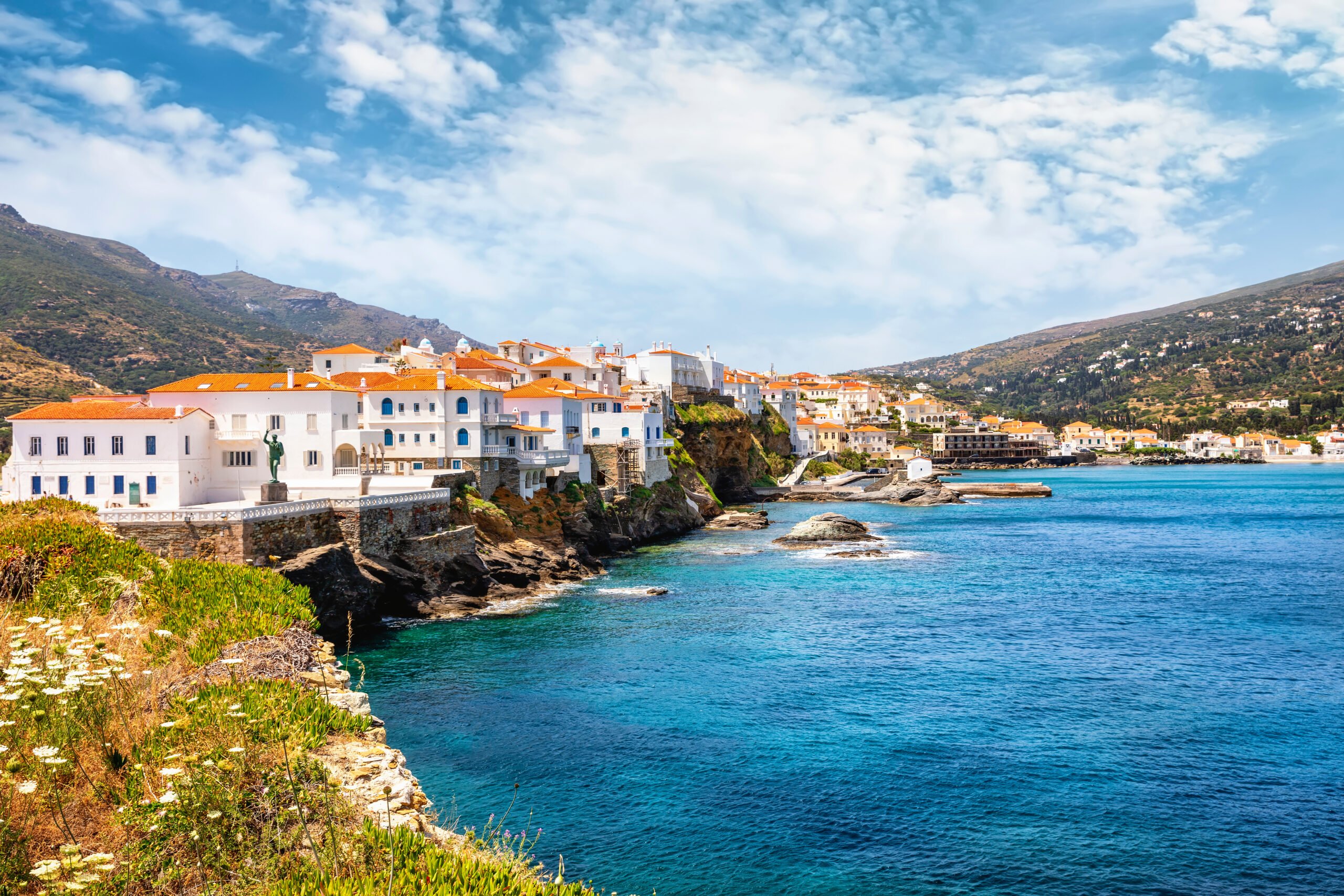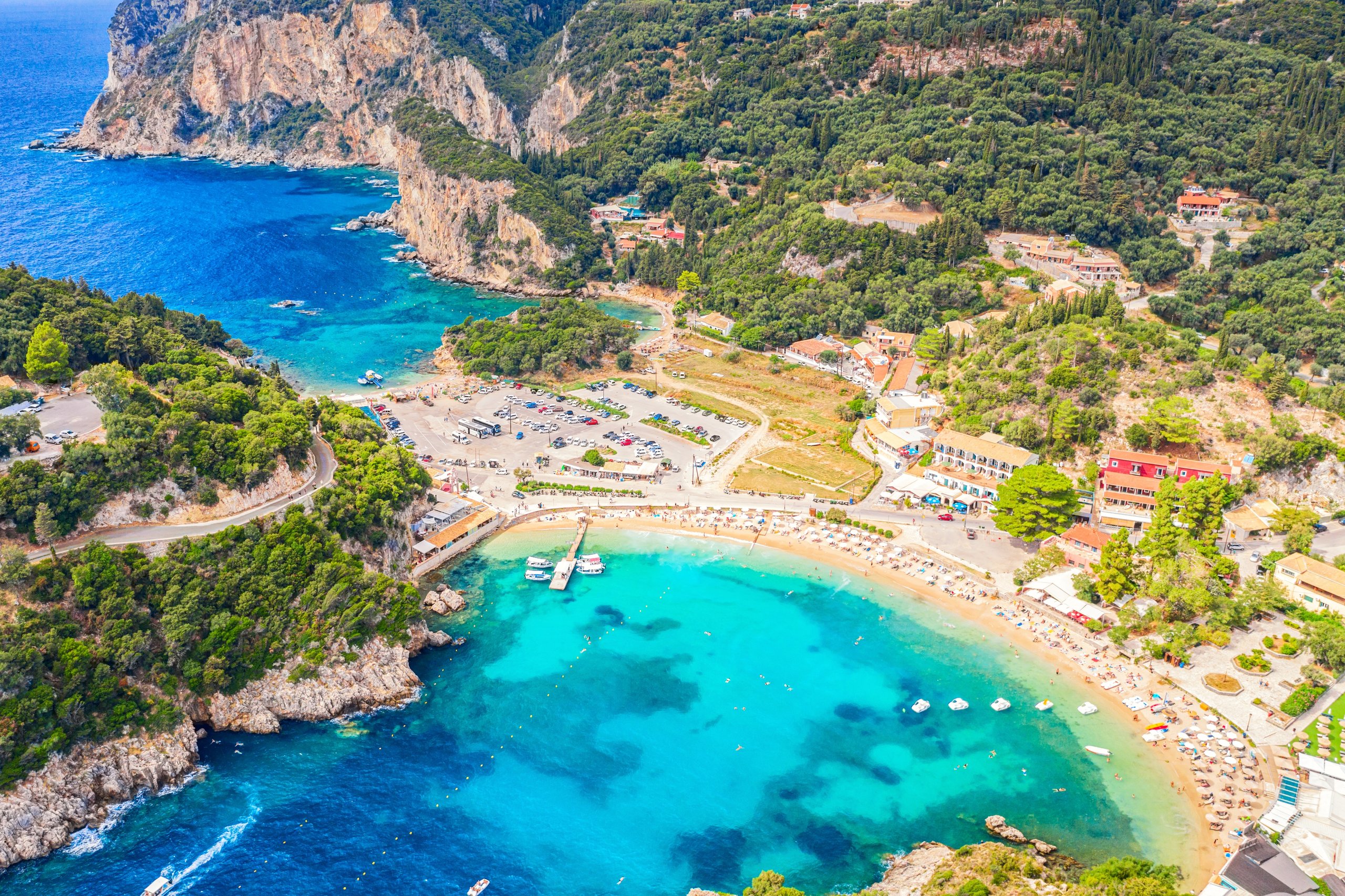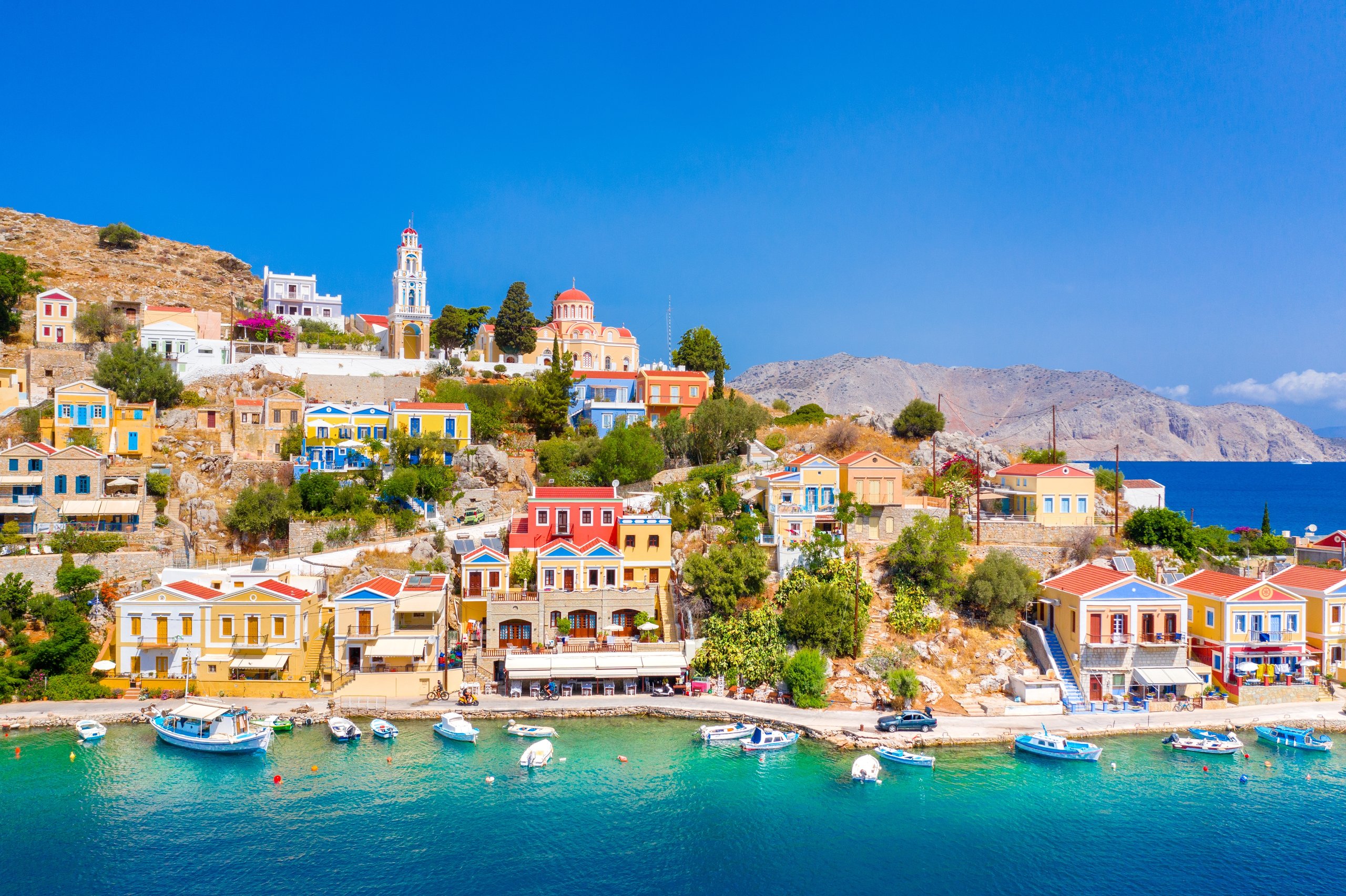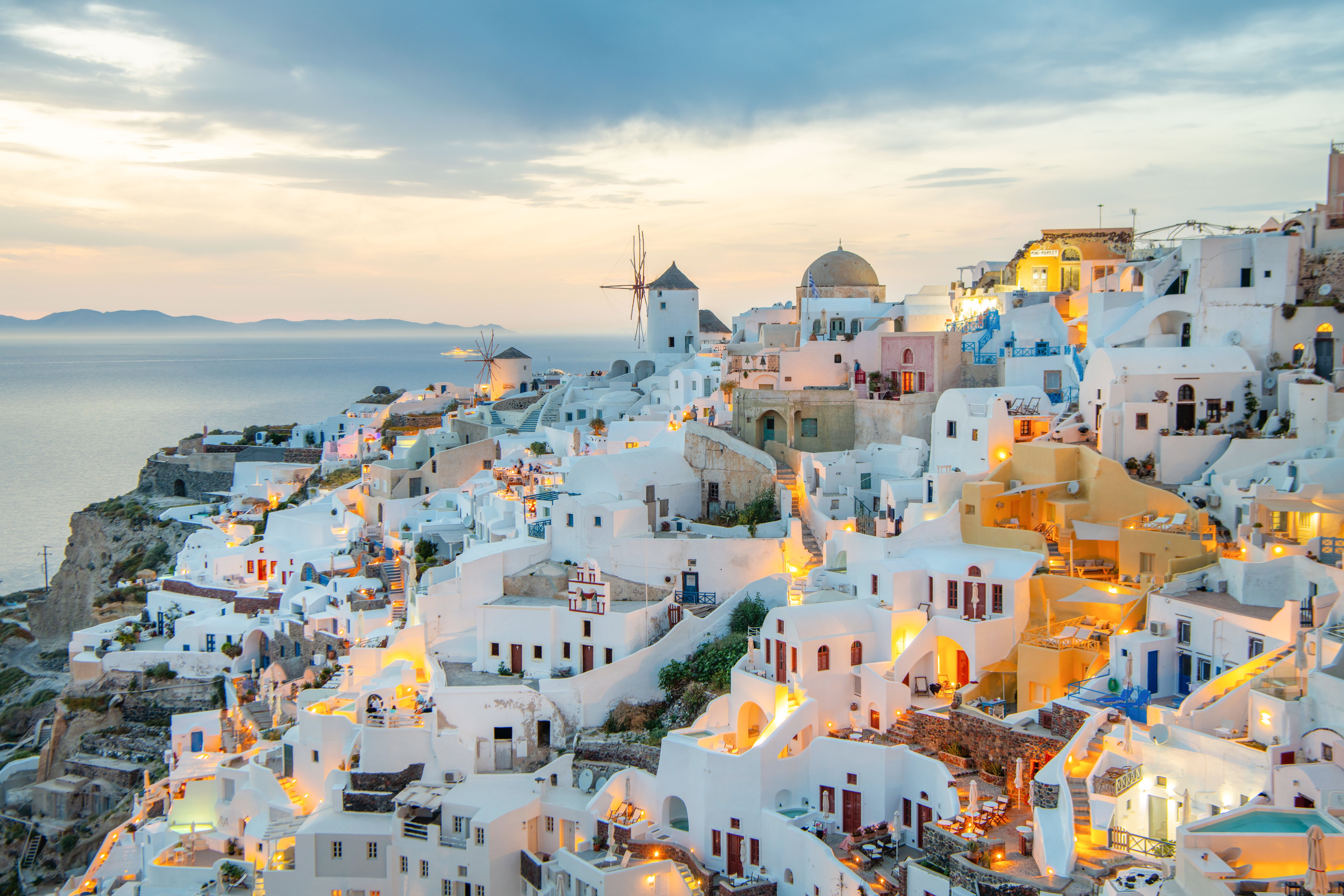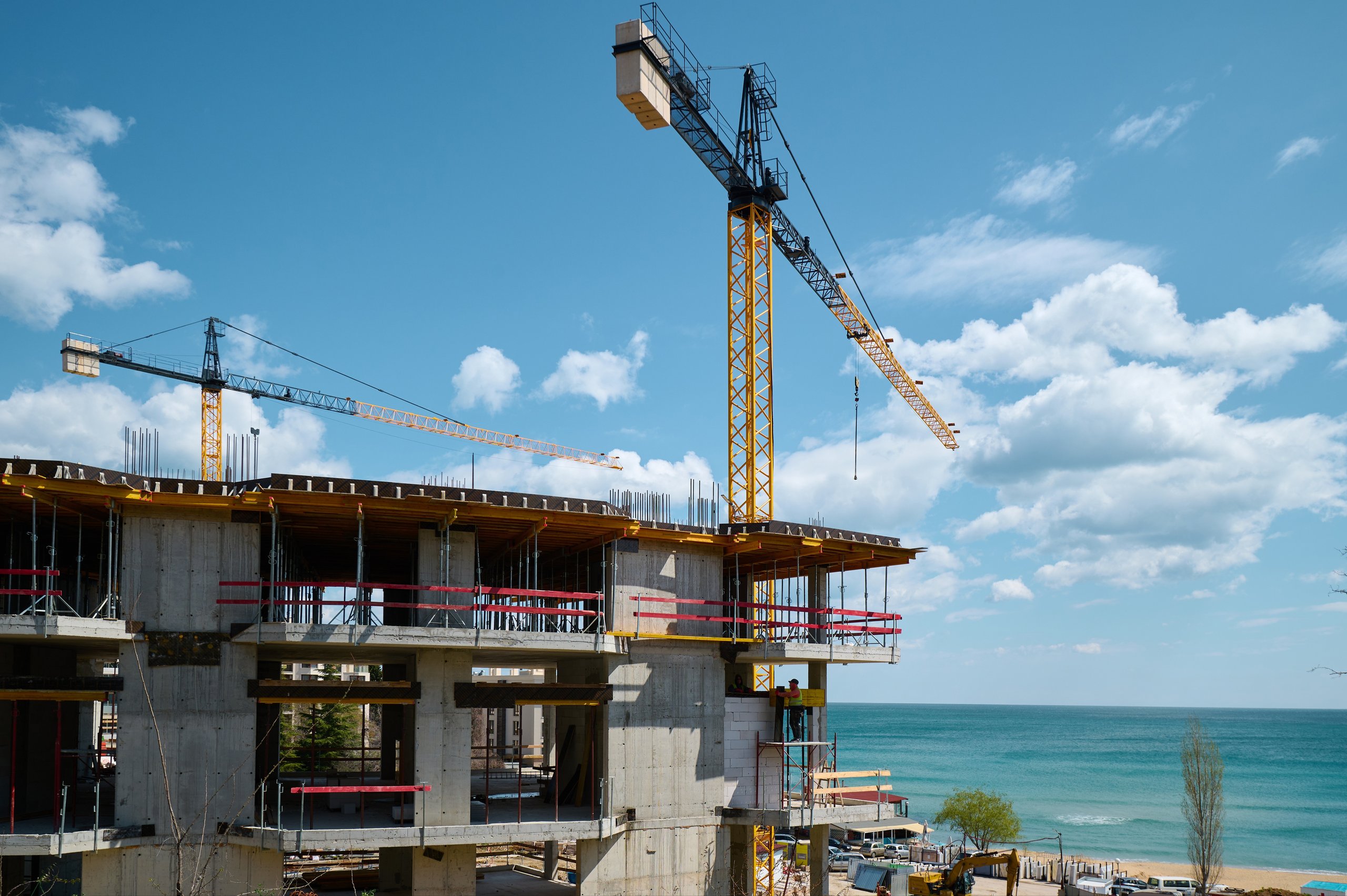What’s the most surprising thing about Sicily? The kindness and gentleness of its people, the beauty of its Baroque cities, the affordability of its property? Or maybe that you can ski down Mount Etna! Discover Sicily and its property options.
Sicily is the largest island in the Mediterranean and one of Italy’s most captivating locations for overseas buyers. Positioned further south than parts of Tunisia, it offers a unique mix of dramatic landscapes, Baroque towns, and coastal resorts.
Interest is rising fast. High-profile TV shows have played their part, from The White Lotus (set in glamorous Taormina) to news features on the one-euro homes campaign.
Today, Sicily appeals to a wide range of buyers: long-weekenders in Palermo, luxury seekers in Taormina, culture lovers in Siracusa and bargain-hunters looking at renovation projects inland.
With four international airports, year-round sunshine, and property prices well below the national average, it’s no surprise that Sicily is firmly on the radar for holiday homes, relocations and investments. For broader context, compare with our regional guides on Puglia, Umbria, and Abruzzo.
Contents
- Why you should be buying property in Sicily
- Understanding the property market
- Property types and what you can get for your money
- Best areas to buy property in Sicily
- The buying process in Sicily
- How much it costs to buy in Sicily
- Frequently asked questions
Why you should be buying property in Sicily
Sicily is one of the most alluring places to buy in Italy — an island that blends natural beauty, affordability and international accessibility. For many buyers, it ticks the boxes of lifestyle, culture and investment potential in one package.
Affordable by comparison
Property in Sicily is considerably cheaper than the Italian average. In 2025, the average home cost around €1,200 per square metre, well below national levels and about half what you would pay in Tuscany.
Bargain-hunters are drawn to the one-euro homes campaign, although realistic buyers should expect €50,000 or more in renovation costs, and potential problems finding a builder. For further inspiration, see our guide on finding affordable property in Italy.
Appealing tax regime
Foreign buyers who become tax residents in Sicily can take advantage of Italy’s 7% flat tax scheme, which applies to overseas income, pensions and rental revenue (but not Italian-sourced income). This makes the island especially attractive for retirees or those relocating with global earnings. For more details, see our guide to Italian taxes in 2025.
Natural and cultural highlights
With crystal-clear waters, olive groves, vineyards and the active volcano Mount Etna, Sicily’s landscapes are unforgettable. Add in Baroque palaces, UNESCO-listed towns and vibrant cities like Palermo, and it’s easy to see why buyers fall in love with the island. Food and wine culture is another draw — and you can immerse yourself further with our feature on cooking like a local in Italy.
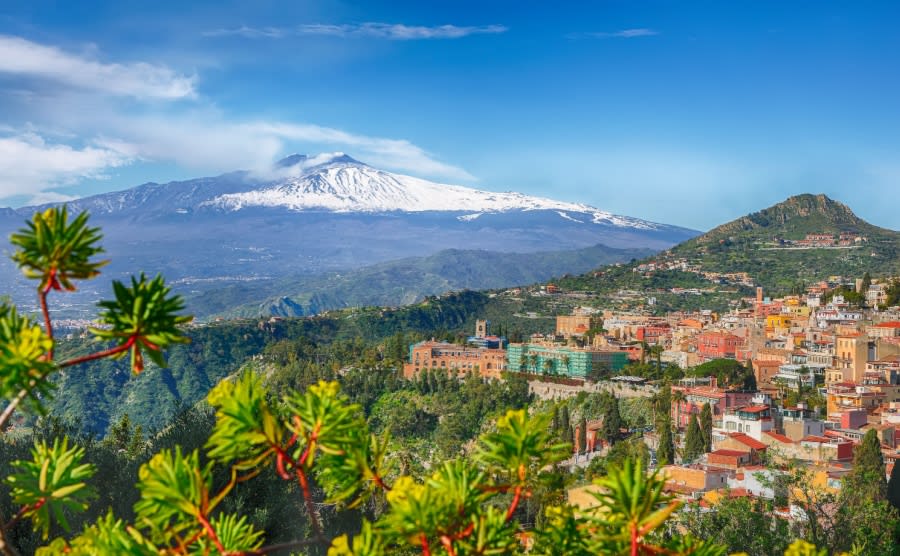
Excellent connections
Palermo Airport is Sicily’s largest, with flights from over 200 destinations across Europe. Buyers from the US benefit from direct routes from major airports including New York and Boston.
With four airports across the island, access is simple whether you’re heading to Palermo, Catania, Trapani or Comiso. To compare with other well-connected hubs, see Italian cities near airports.
Understanding the property market
Sicily is divided into nine provinces, each offering distinct character and pricing. Overall, the average property price is around €1,200 per square metre — well below the national average — but the variation between prime locations like Taormina and inland villages is dramatic. This means buyers can choose between luxury homes in exclusive resorts and affordable countryside projects with renovation potential.
Check out some properties for sale in Sicily today.
Some provinces, such as Palermo and Catania, attract those seeking urban convenience and culture, while coastal towns like Cefalù and Trapani offer seaside lifestyles at mid-range prices. Inland areas — including parts of Enna or Caltanissetta — can be extremely affordable, sometimes under €1,000 per square metre. For buyers weighing up alternatives across Italy, compare with our guides to Umbria, Abruzzo and Puglia.
Property types and what you can get for your money
Sicily offers one of the most diverse housing markets in Italy. Buyers can choose from Baroque palazzos in historic centres, seaside apartments, rustic farmhouses, and even modern new-builds. Prices vary significantly depending on location and condition:
| Property type | Typical price range | Notes |
|---|---|---|
| One-euro homes | €1 + €30,000–€50,000 renovations | Available in inland villages, buyers must commit to renovation |
| Historic apartments | €100,000 – €300,000 | Often in Palermo, Catania or Siracusa, with period features |
| Farmhouses & rural homes | €150,000 – €400,000 | Stone houses with land or olive groves, many need restoration |
| Seaside villas | €500,000 – €2 million+ | Found in Taormina, Cefalù and Ortigia, prime sea-view locations |
| New-build developments | €200,000 – €600,000 | Modern apartments and villas, usually near urban hubs |
For more inspiration, read our features on affordable property in Italy and different Italian property types.
Best areas to buy property in Sicily
Sicily is divided into nine provinces, each with its own character, landscapes and housing market. The island’s average property price is around €1,300 per square metre, but there is wide variation depending on location. Inland provinces are among the cheapest in Italy, while hotspots like Taormina command premium prices. Here’s a province-by-province breakdown to help you choose where to buy.
Trapani
On Sicily’s western tip, Trapani combines ancient charm with coastal living. The city is full of honey-coloured stone buildings, while the Zingaro Reserve and two coastlines provide spectacular scenery. This is one of Sicily’s most affordable coastal areas, with median prices around €1,000/m² — roughly 10% lower than two years ago. Inland properties can drop to €500/m², while coastal homes average from €700/m². Expats are increasingly drawn here for its blend of authenticity and value.
Palermo
Sicily’s capital is a dazzling mix of Baroque architecture, grand piazzas and lively markets. Once the holiday destination of wealthy Italians, Palermo today offers historic apartments, modern homes and proximity to beaches like Mondello.
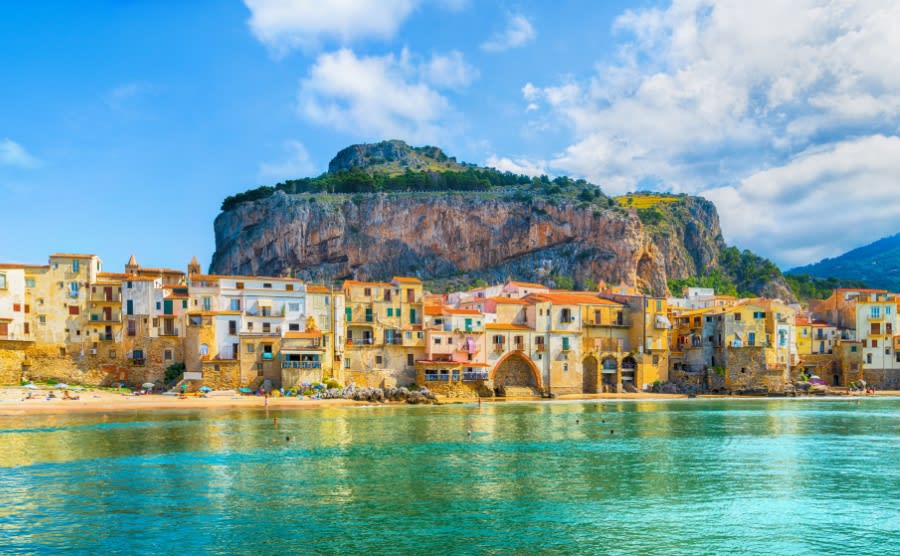
Cefalu, the seaside resort near Palermo, SicilyThe province also stretches east to Cefalù, a popular resort with international buyers. Median prices here are around €1,250/m², with pockets of more affordable housing outside the city centre.
Agrigento
Best known for the Valley of the Temples, Agrigento is also rich in beaches and vineyards. Torre Salsa is a nature reserve with pristine sands, while Menfi in the west commands higher values thanks to its wine estates. Property remains affordable overall, with a median price of €1,050/m², though expect to pay more in desirable coastal towns.
Caltanissetta
This inland province is often overlooked, but it offers some of the cheapest property in Sicily, with a median of €950/m². The rural landscape, cooler climate and peaceful atmosphere make it a good choice for holiday homes rather than year-round relocation. Buyers should be prepared for limited work opportunities but can enjoy a more authentic, slow-paced Sicilian lifestyle.
Siracusa
Home to the ancient Greek city of Syracuse and the island of Ortigia, Siracusa blends archaeology, baroque squares and coastal beauty. Ortigia’s apartments are particularly sought after, balancing affordability with atmosphere. Beaches line the coast, while towns like Pachino are pricier. Median prices are around €1,050/m², with many affordable options in smaller towns and villages.
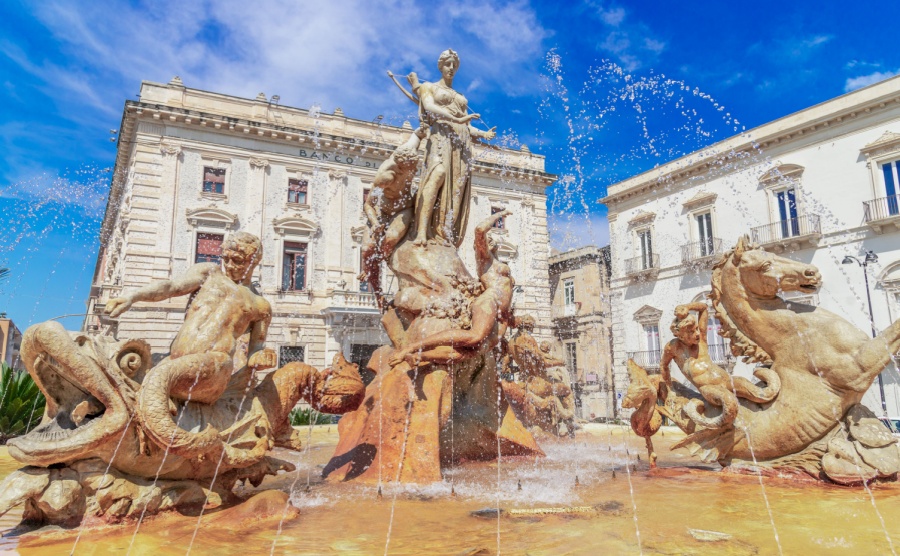
Enna
Sicily’s highest provincial capital, Enna offers history, castles and natural beauty at low cost. Highlights include Piazza Armerina’s Roman mosaics and Lake Pergusa’s wildlife reserve. Median prices sit at €950/m², making this one of the best-value provinces for rural buyers looking for authentic Sicilian life.
Messina
Situated opposite mainland Italy, Messina enjoys year-round sunshine, averaging 2,500 hours annually. Its cultural mix and Greek-speaking communities give it a distinctive character.
While the province’s median price is €1,400/m², areas like Taormina – a glamorous resort featured in TV’s White Lotus that’s long attracted international buyers – are much more expensive, often exceeding €3,000/m². Inland villages such as Castiglione di Sicilia offer more affordable alternatives.
Catania
Set at the foot of Mount Etna, Catania combines city life, UNESCO heritage and fertile farmland. Its cuisine and citrus groves are famous worldwide, and wine production is growing in importance.
Property in the city averages €1,250/m², while inland villages and hilltop towns such as Militello or Castiglione di Sicilia offer lower prices. Coastal hotspots like Aci Castello, with its Norman castle, command more.
Ragusa
Part of the Val di Noto UNESCO World Heritage area, Ragusa is known for its baroque architecture, sandy beaches and excellent seafood. Towns like Chiaramonte Gulfi, nicknamed the “Balcony of Sicily,” provide stunning views across the valleys to the sea. With median prices around €1,000/m², Ragusa offers a balance of lifestyle and affordability, making it one of the most attractive provinces for overseas buyers.
As Goethe once wrote: “To have seen Italy without having seen Sicily is to not have seen Italy at all, for Sicily is the clue to everything.” From coastlines to castles, bustling cities to peaceful countryside, the island truly offers something for every type of buyer.
If you’re serious about viewing homes in Sicily, download your free Italian Viewing Trip Guide to plan your property search effectively.
For comparisons with other Italian hotspots, see our guides to Venice, Lucca, and Lake Como.
The buying process in Sicily
Foreign buyers can legally purchase property in Sicily without restrictions, but the process has its own steps and legal requirements. Being prepared — and working with the right professionals — will make your Sicilian property journey smooth and secure.
1. Define your requirements
Decide what you want in terms of property type, size, location and budget. Are you after a coastal holiday home, a countryside retreat or a city apartment? Our guide to finding your perfect property in Italy can help you refine your search criteria.
2. Research the market
Explore Sicily’s nine provinces to see which areas best match your lifestyle. Palermo offers urban energy, Siracusa blends history with sea views, and Trapani provides coastal charm. Prices vary widely between inland villages and premium seaside resorts. For value-driven tips, read finding affordable property in Italy.
3. Engage trusted professionals
Always work with a qualified property lawyer (avvocato) and a notary (notaio) who will oversee contracts and ensure legal compliance. Choose a reliable estate agent who understands the needs of international buyers.
4. Arrange your finances
You’ll need an Italian codice fiscale (tax code) before buying. If financing, non-residents can apply for an Italian mortgage with deposits usually between 20–30%. See our guide on getting a mortgage in Italy. Don’t forget to plan your currency strategy to protect against exchange rate swings — using a specialist can save thousands compared to relying on a bank.
5. Make an offer
Offers are usually made through your estate agent. Once accepted, you’ll sign a preliminary contract (compromesso) and pay a deposit (typically 10–20%). This locks in the sale terms. Learn more in our guide to making an offer in Italy.
6. Legal checks and completion
The notary performs due diligence, checking ownership, debts and planning permissions. On completion, you’ll sign the final deed of sale (rogito) before the notary and pay the remaining balance. The notary then registers the property in your name. For more details, see the property buying process in Italy.
7. Moving in and ownership
Once registered, you can take possession of your new Sicilian home. Many international owners use property management services to look after homes and rentals. Don’t forget to arrange utilities, insurance and — if needed — renovations. Our advice on fitting out your Italian home will help you settle in.
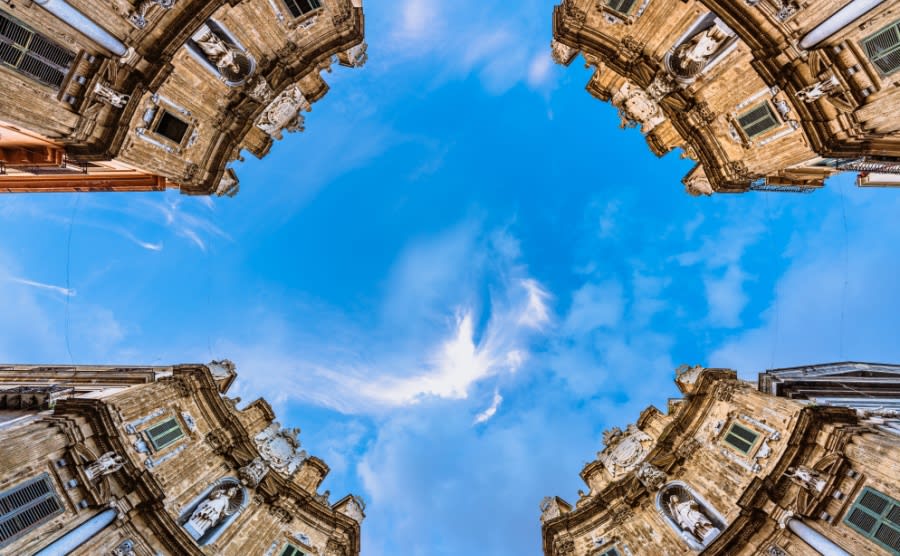
How much it costs to buy in Sicily
Buying property in Sicily is more affordable than in many other Italian regions, but you’ll still need to budget carefully for purchase fees, taxes and ongoing ownership costs. In total, most buyers should allow an additional 10–15% of the purchase price to cover all associated expenses. For an in-depth overview, see our full guide on the costs of buying property in Italy.
Purchase taxes
- Main residence: 2% of the cadastral value (often much lower than market value).
- Second home: 9% of the cadastral value.
- New-builds: VAT at 4% (main residence), 10% (second home), or 22% (luxury).
Updated rates for 2025 are detailed in our guide to taxes in Italy.
Notary and legal fees
Notary fees usually fall between 1–2.5% of the declared price, depending on the complexity of the transaction. Many overseas buyers also appoint an independent lawyer to carry out extra checks, adding around 1% to costs. Together, allow 2–4% of the property price for notary and legal services.
Estate agent commissions
Estate agents in Sicily generally charge 3–5% of the property price. Fees are often split between buyer and seller, but not always, so confirm in advance with your estate agent.
Other one-off costs
- Survey & checks: Recommended for older homes. See essential property checks.
- Currency exchange: Exchange rates can shift your final cost by thousands. A specialist like Smart Currency Exchange helps you secure a favourable rate and avoid hidden fees.
- Renovations & furnishing: Particularly relevant if you buy a one-euro home or rustic farmhouse. Plan ahead with our guide to fitting out your Italian home.
Ongoing ownership costs
- Annual property taxes: IMU (for second homes) and TARI (waste tax) vary by municipality and property size.
- Utilities & maintenance: Electricity, water, communal fees (if in an apartment block) and routine upkeep.
- Property management: For non-resident owners, property management services can handle rentals, cleaning and guest check-ins.
Factoring in these costs ensures you set a realistic budget — whether you’re restoring a €1 home, buying a Palermo apartment or investing in a luxury villa in Taormina.
Getting there and connectivity
Despite being an island, Sicily is one of the most accessible parts of southern Italy. With four international airports, strong ferry links and good road and rail connections, it’s easy for international buyers to travel to and around the island.
By air
Sicily is served by four airports: Palermo, Catania, Trapani and Comiso. Palermo and Catania are the busiest, with direct flights to and from hundreds of European destinations. Buyers from the US can also fly direct from major hubs including New York and Boston. For comparison with other convenient hubs, see our guide to Italian cities near airports.
By sea
Regular ferries connect Sicily to mainland Italy, including routes from Naples, Genoa and Calabria. Fast ferries also run to smaller islands like the Aeolian and Egadi, making island-hopping part of the lifestyle for many buyers.
By rail
Train services link major Sicilian cities such as Palermo, Messina, Catania and Siracusa. Uniquely, trains to and from the Italian mainland are loaded onto ferries across the Strait of Messina, so you can travel directly by rail from Rome or Naples without changing mode. However, there are also now clearer plans for a bridge to the mainland.
By road
Sicily’s motorway network connects Palermo, Catania, Messina and other urban centres. Driving offers flexibility, particularly in rural and coastal areas where public transport is less frequent. Once in Sicily, for international buyers who want to explore at leisure, a car is often essential.
Proximity to other destinations
From Sicily, you can easily reach mainland Italy, Malta, and even Tunisia. This central Mediterranean position makes it ideal for buyers who want sunshine, cultural variety and international connections. If you’re weighing up where else in Italy to buy, see our regional guides to Puglia, Umbria and Abruzzo.
Frequently asked questions
Is Sicily a good place for international buyers?
Yes. Sicily offers a rare mix of beautiful scenery, historic towns and comparatively low prices, with strong lifestyle appeal from Palermo to Siracusa and Cefalù. For broader context, see property investment in Italy.
Can foreigners buy property in Sicily?
Yes. There are no general restrictions on foreign buyers in Italy. Read more in Can I buy property in Italy?
How much does property cost in Sicily?
Average prices are below the Italian average. Inland and renovation properties offer strong value, while hotspots like Taormina and Ortigia command premiums. See our price table above and finding affordable property in Italy.
What extra fees and taxes should I budget for?
Allow ~10–15% on top of the purchase price for taxes, notary/legal fees and other costs. Start with costs of buying in Italy and updated tax rates for 2025.
How long does the buying process take?
Typically 2–3 months from the preliminary contract (compromesso) to completion (rogito), assuming finances and due diligence are ready. See the full Italy buying process.
Do I need both a lawyer and a notary?
The notary is mandatory and finalises the sale; many overseas buyers also instruct an independent lawyer for extra protection. Learn about the notary’s role.
Can I get a mortgage as a non-resident?
Yes. Italian lenders do offer non-resident mortgages, typically with deposits of 20–30%. See how to get a mortgage in Italy.
Can I rent out my Sicilian property?
Short-term rentals are popular in coastal and heritage areas, but you must comply with local rules and national changes for 2025. Read Italy’s new rental rules and consider property management.
What incentives exist for new residents?
Qualifying new tax residents in parts of southern Italy (including Sicily) may access a 7% flat tax on foreign income. See taxes in Italy for details and eligibility.
Which areas offer the best value?
Smaller inland towns and hill villages often provide larger homes for less. If still unsure about buying property in Sicily, compare options with our guides to Umbria and Abruzzo, or see how to find an estate agent.

